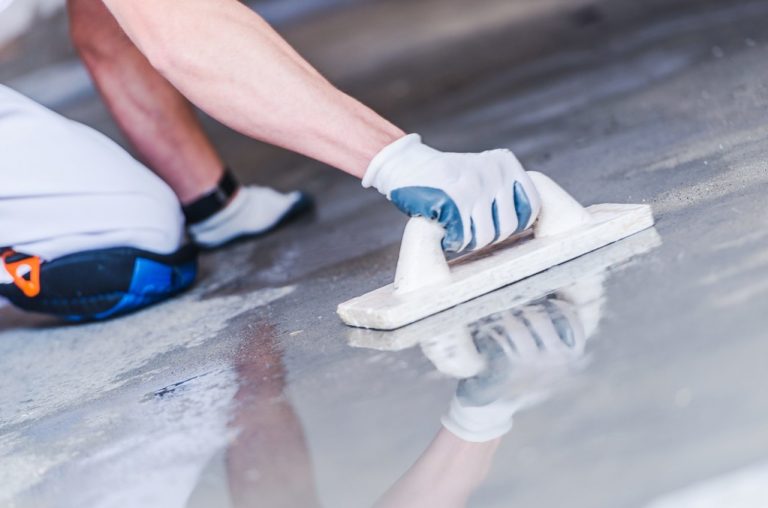Waterproofing is the use of impermeable tiers on the areas of foundations, wall space, roofs, and other areas of the building which might be concrete, leather, textile offering a surface impermeable barrier is to avoid water penetrations.
Such objects or structures may be used in wet environments or underwater to a specified depth.
In a nutshell, Waterproof Lab means cover to prevent drinking water entering in inner and exterior building structures such as toilets, swimming pools, water tanks, wall space, ceilings etc.
This creates a hurdle that means it is impossible for normal water to pass through the material as this property prevents flooding and moisture content in buildings.
It helps in minimizing the humidity inside, thus prevents harm to our indoors from exposure to moisture or normal water.
TYPES OF WATERPROOFING:
1.CEMENTITIOUS WATERPROOFING:
Cemented waterproofing is the easiest approach to waterproofing, materials required are openly available, easy to mix and apply.
It really is usually rigid or semi-flexible waterproofings hence used at interior places such as toilets & areas not subjected to sun light and weathering.
Thus, the restriction and enlargement process will not lead to a constrained waterfall.
2.LIQUID WATERPROOFING MEMBRANE:
A liquid membrane is a slender coating which has a primer coating and topcoat utilized by a spray, roller, or trowel gives extra flexibility as compare to the cementitious waterproofing.
The water is cured in a rubber covering on the wall structure and surface elongation properties can reach 280%, the strength of any waterproofing coating will depend on the type of manufacturer.
It could be sprayed with the liquid layer created from the polymer-modified asphalt which is obtainable in different grades for trowels, rollers or sprays from various manufacturers.
3.BITUMINOUS Finish WATERPROOFING:
Bituminous coating waterproofing are flexibility and protectiveness against water that may be affected by polymer levels and support of fibers also called asphalt coating.
The most frequent use of bituminous coatings are under moist bolts, especially on surfaces such as concrete foundations.
These waterproofings comprises of bitumen fabricated materials as it becomes very brittle when exposed to sunlight with adaptable materials such as polyurethane or acrylic-based polymers.
The flexibility is determined by the dependable content of the polymer added to the bitumen.
4.BITUMINOUS MEMBRANE WATERPROOFING:
Bituminous waterproofing is a favorite strategy used for the reduced sloping roofs due to their low efficiency, it includes a torch and a self-adhesive membrane on the part.
Self-adhesive materials include asphalt, polymers, and filler, although some resins and oils are put into increase the adhesion characteristics.
The self-adhesive has a shorter shelf life due to bonding properties of membrane life as time passes, while the torch on the membrane is exposed and covered.
Uncovered membranes contain granular nutrient aggregates to withstand the weathering and other areas requires the contractor to apply protective screws to prevent perforation of the membrane.
This method is the layer of a adaptable asphalt covering with two methods: one is the torch seal and the other is a self-adhesive waterproofing membrane.
The torch seal is used for podiums, outdoor development, and works on site and widespread method used for on-site waterproofings, it is a far more durable and cost-effective method than self-adhesive membranes.
5.POLYURETHANE LIQUID MEMBRANE:
This polyurethane water membrane is used for smooth roofs, which is subjected to weathering and has high ductility.
Polyurethane is very very sensitive to a moisture content content that should be used in evaluating moisture content before application, normally, membrane peeling or de-bonding may occur over time.
6.INJECTION GROUTING WATERPROOFING:
In treatment grouting waterproofing, a low viscous injections resin for waterproofings program in small to medium infiltration found in bricks, concrete, and other set ups like the basement, tunnels, etc.
7.POLYURETHANE Water MEMBRANE:
Polyurethane liquid membrane is an expensive method, in which versatile membrane applied carefully to avoid cracking after some time used for areas with open rooftop and weathering.
8.EPDM WATERPROOFING MEMBRANE:
EPM waterproofing membrane is a fabricated rubber single layer adaptable membrane, durable in chilly and warm weather.
